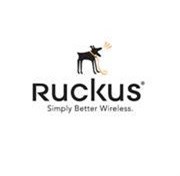
"Wi-Fi's great strength is that it runs in unlicensed spectrum, can be deployed by anyone, and it is supported on almost every smart handheld or IoT device you can think of," said Steve Hratko, Director of Carrier Marketing of Ruckus Wireless. "Its real sweet spot is high-capacity, high-density indoor applications with low mobility."
In contrast, cellular technology, which has swept across the globe over the last few decades helping to create a multi-trillion-dollar telecommunications industry, is ideal for its ubiquitous outdoor coverage, seamless mobility, and support for real-time applications like voice and streaming multimedia. Combining these technologies offers great promise for the entire industry. But how they come together remains a big question.
"There's simply no doubt that these two technologies will continue to converge with the goal of giving users an 'always best connected' experience. Ultimately, users don't really care about what wireless technology is used as long as it is fast, reliable and affordable," added Hratko.
A variety of different approaches to Wi-Fi/cellular convergence are being considered by various industry groups. As these worlds collide, understanding the distinctions between these different approaches is important, realising that there's no right or wrong answer, just different choices (depending on your frame of reference). Like everything, the market will ultimately decide what works best and when.
One such option that has received a lot of attention recently is LTE-U, which is an approach to run LTE directly over the 5GHz unlicensed bands. While it isn't so much convergence as it is way to obtain additional wireless spectrum for mobile services, the great challenge with this approach revolves around getting LTE to coexist peacefully with Wi-Fi in the unlicensed bands, but the sharing of spectrum is not in the LTE DNA.
An alternative to using LTE in unlicensed spectrum that could be much more palatable to the broader industry is LTE + Wi-Fi Link Aggregation (LWA). This approach, being strongly promoted by Qualcomm, achieves a very similar result but with some big differences. With LWA, the LTE data payload is split and some traffic is tunnelled over Wi-Fi and the rest is sent natively over LTE. This can greatly enhance the performance of an LTE service as both technologies are allowed to do what they do best, and LTE no longer needs to perform any unnatural acts.
"The big advantage of this approach is that all Wi-Fi traffic can benefit from the services provided by the mobile operator's EPC (evolved packet core). These services include billing, deep packet inspection, lawful intercept, policy, authentication and the list goes on. If the LTE signal is lost, this service will drop and the user can reinitiate an internet connection over Wi-Fi. This approach is somewhat similar to multi-link or multi-path TCP, except that the traffic is combined in the cellular RAN rather than back in the internet. As such, LWA becomes a solution that doesn't impact on the unlicensed band while leveraging existing Wi-Fi access points and improving indoor cellular performance," said Hratko.
"The convergence of Wi-Fi and LTE small cell technology will play out over the remainder of the decade. The end result will be to enable an always best-connected experience for the user. The future looks bright for carrier grade Wi-Fi technology and LTE small cells," concluded Hratko.